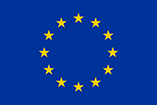Link2Trials Q&A_22
Marjolein Nankman
1167 (updated: 08-05-2025 12:52)

07-05-2025 16:59
In this Q&A series we answer questions we have received from our customer base.
#22: How does a patient feasibility reduce trial costs in the ong run?
Answer:
While patient feasibility assessment adds a small investment upfront, it often leads to significant cost savings over the course of the trial. Here's how:
- Reduces recruitment delays - By ensuring eligibility criteria and study requirements align with patient realities, recruitment progresses faster.
- Minimizes protocol amendments – Fewer amendments mean lower costs, as protocol changes are often time-consuming and expensive.
- Increases retention rates - A patient-friendly study design reduces dropout rates, leading to fewer costs.
- Optimizes site selection– Insights from patients help identify locations where recruitment is most feasible, avoiding underperforming sites.
- Enhances operational efficiency – Clearer study materials and better-prepared patients reduce the need for additional site resources and re-explanations.
By making trials more patient-centric from the start, feasibility assessments save botth time and money, ultimately making the study more efficient.
Let us know what you think and follow us on LinkedIn
Do you have another question for one of our recruitment experts, let us know, and we will be happy to answer.
Like or Share
Choose category
Latest posts
- 04 November, 2025
- Link2Trials Q&A_30
- 15 August, 2025
- Link2Trials Q&A_29
- 18 July, 2025
- Link2Trials Q&A_28
- 04 July, 2025
- Link2Trials Q&A_27
- 03 June, 2025
- Link2Trials Q&A_26

 Argentina
Argentina Australia
Australia Balgarija
Balgarija België
België Canada
Canada Česko
Česko Chile
Chile China (中国)
China (中国) Colombia
Colombia Danmark
Danmark Deutschland
Deutschland England
England España
España France
France Ireland
Ireland Italiana
Italiana Lietuva
Lietuva Magyarország
Magyarország Nederland
Nederland New Zealand
New Zealand Österreich
Österreich Polska
Polska Schweiz
Schweiz Singapore
Singapore Slovenija
Slovenija Slovensko
Slovensko Suomi
Suomi Sverige
Sverige United States
United States Israel
Israel


